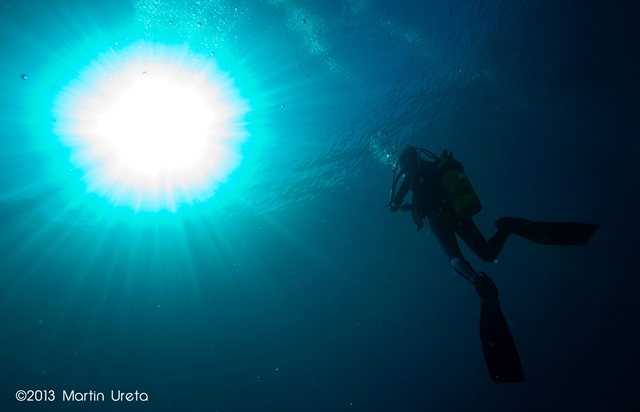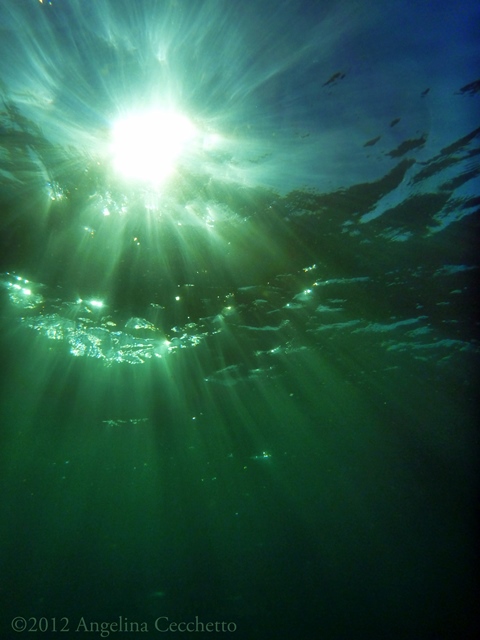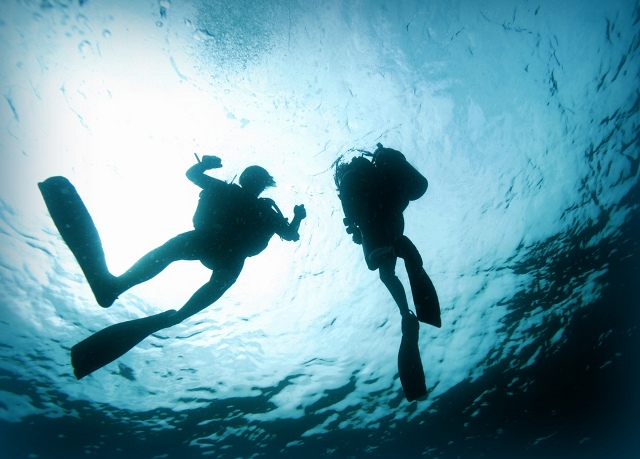
Photography: ©2013 Martin Ureta. All Rights Reserved.
When you work as a dive instructor or a dive video photographer you witness a lot of the underwater world as the ocean becomes your office. A friend of mine who has been a great dive instructor for years and lately also became video photographer decided to stop being a dive instructor and an underwater video photographer all together. When I asked him why, he told me that he could not handle seeing the damage that the dive industry caused upon the reefs and especially the shallow coral reefs where novice divers are brought to on their very first dives. I must say that I have myself witnessed a few beginners’ divers walking or clumsily finning on coral reefs and I also wondered if the dive industry was not generating more damage than protection.
After reflections and discussions, I came to the conclusion that diving was more beneficial for the ocean than it was destructive. I even now go as far as believing that divers and diving professionals could constitute a strong “manpower” towards ocean conservation along with the marine biologists.
First I would say that when people start diving they discover a whole new world that was totally unknown to them. Then as they dive more and become more confident, they really relax and start appreciating the underwater world, its diversity and magic beauty. As they dive more and more in various dive spots around the world they become aware of the ocean pollution across the world, of the traces of human consumption such as plastic bags floating around, plastic or glass bottles, metal cans laying around the reefs. This is where divers influence can positively make a difference in the right direction. I estimate there are several millions of divers in the world and a few thousand professional divers. If all the divers who come across garbage picked it up, this would definitely start making a noticeable difference.
More and more dive centers also start organizing regular “clean-up” dives on their house reefs or local reefs, this is a great action that should become common in most dive centers in a near future.
I also know of a few non-professional divers who have been organizing individual actions within their county or province to raise awareness to non-divers about the state of the reefs but also the lakes in which they dive near their homes.
Beyond dive centers and individuals initiatives there is another important positive impact related to diving. In many of the tropical countries where I have been working and diving, I have witnessed that the local people can only live off 3 main activities, fishing, tourism (diving) and drugs dealing. Before tourism developed, their main activity was fishing. As we all know overfishing is a major threat to many species and the main cause of some species depletion. The fact that the dive industry is developing and offering the locals more and more job opportunities help them shift their main activities from fishing to diving or tourism. Not only more and more locals start working in the diving or tourism industry but they become aware that they can generate a good income doing so and as a result some started protecting the ocean wealth. The Maldives, that are now very famous for manta presence, have fully understood the great value of manta diving. Millions of divers go to the Maldives on expensive holidays to see the mantas and whale sharks and this contribute heavily in the wellbeing of the Maldivian tourism industry.
Now whilst some countries have understood the value of the underwater biodiversity and the importance in protecting this natural heritage, some others have not yet realized this.
I must be honest and say that before becoming a diver years ago, I was not aware of all these issues and therefore I was not doing anything about them. Now I am aware of these issues, like many divers I know, I do my best to act and try to have a positive impact about it. When I used to lead dives I would show the example by picking up debris whenever I saw some. I am now trying to work on an awareness project against shark finning which would ideally be diffused in China if possible. I truly believe that if the millions of divers across the world did a small gesture towards ocean conservation, it could have a definite positive impact on the situation. I know that many divers and dive centers are involved in conservation projects and this is the way forward.
Many would argue that the tourism industry is one of the sources of sea pollution and I would agree however I know for a fact that there is a higher probability that a “diver” gets involved in an ocean preservation project rather than a “non-diver”. If two individuals pollute equally but one of them cleans up some of its pollution then he is the example to follow.
I truly believe that divers can protect the ocean more than they damage it, so to the question “To dive or not to dive?” I would reply “Dive it is!”
By Angelina Cecchetto on 12th February 2013




